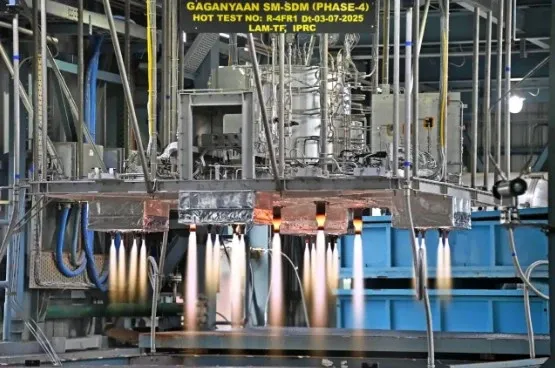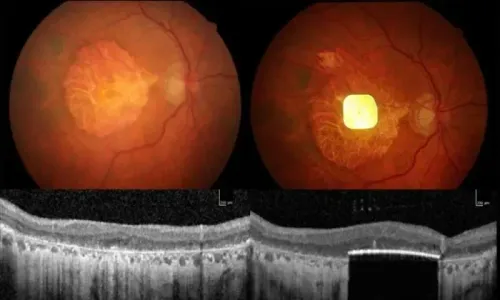Did ISRO Just Take a Major Leap with Gaganyaan's Propulsion System?

Synopsis
Key Takeaways
- ISRO successfully conducted hot tests for its Gaganyaan mission.
- The Service Module Propulsion System is crucial for safe crew operations.
- Upcoming tests will enhance confidence in future missions.
- The Gaganyaan mission is set for launch in 2027.
- ISRO aims to establish India as a key player in human spaceflight.
New Delhi, July 9 (NationPress) ISRO announced on Wednesday that it has successfully executed two hot tests of the Gaganyaan Service Module Propulsion System (SMPS), marking a significant step forward for the Gaganyaan human spaceflight initiative.
The hot tests took place on July 3 at the ISRO Propulsion Complex (IPRC), located in Mahendragiri within Tamil Nadu’s Tirunelveli District.
“Two brief hot tests were conducted lasting 30 seconds and 100 seconds to validate the configuration of the test article. The overall performance of the propulsion system during these tests was deemed normal according to pre-test predictions,” stated ISRO.
“During the 100-second test, the simultaneous operation of all RCS thrusters in various modes (steady state; pulsed) along with all LAM engines was also successfully demonstrated,” the agency elaborated.
The Liquid Propulsion System Centre (LPSC) of ISRO is spearheading the technological advancements for the Gaganyaan SMPS.
The SMPS is an essential component of the Gaganyaan Orbital Module and is crucial for orbital maneuvers as well as during specific abort scenarios.
It consists of five Liquid Apogee Motor (LAM) engines, each providing 440N thrust, and 16 Reaction Control System (RCS) thrusters, each with a thrust of 100N.
To replicate propulsion system conditions that closely resemble flight, the test article for these hot tests included enhancements based on insights gained from prior tests.
“With the confidence acquired from these hot tests, ISRO plans to conduct a full-duration hot test in the near future,” the Indian space agency indicated.
The Gaganyaan mission represents India’s human spaceflight initiative, scheduled for launch in 2027.
This program aims to showcase India’s capability to send a crewed spacecraft into low Earth orbit.
ISRO is set to launch at least two pivotal projects under the Gaganyaan mission this year—a second test vehicle and an uncrewed mission.
The uncrewed orbital test mission will lay the groundwork for India’s human spaceflight program, validating systems for crew safety and recovery.
In the meantime, Group Captain Shubhanshu Shukla, one of the four astronaut-designates for the Gaganyaan program, is conducting scientific experiments aboard the International Space Station (ISS) that could benefit the nation’s human spaceflight mission.









